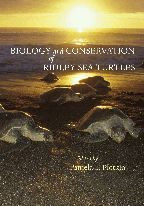
Reviews
Despite the dire issues facing the Leatherback, the book shows tremendous respect for its subject and a genuine, educated commitment to save the remarkable Leatherback.
The Leatherback Turtle provides a global reference for a globally distributed species and fills any number of data gaps for biologists, managers and citizen-scientists, especially in places such as the southeastern United States that are documenting an increasing trend in leatherback nesting.
The massive, magical leatherback remains the last ancient survivor of an otherwise now-extinct family of sea turtles. They survive as Earth’s heaviest reptile and a warm-blooded one to boot. They have been called ‘the largest wild animal you can walk right up to with no fear of being attacked.’ In this excellent volume, the people who have spent their lives learning more, first-hand, about leatherback turtles than anyone in history, share centuries worth of field-knowledge and deep thought. If this book was available when I was writing Voyage of the Turtle, I’d have written a much better book!
Book Details
List of Contributors
Preface
Part I: Biology
Chapter 1. Introduction: Phylogeny and Evolutionary Biology of the Leatherback Turtle
Chapter 2. Phylogeny, Phylogeography, and Populations of the
List of Contributors
Preface
Part I: Biology
Chapter 1. Introduction: Phylogeny and Evolutionary Biology of the Leatherback Turtle
Chapter 2. Phylogeny, Phylogeography, and Populations of the Leatherback Turtle
Chapter 3. Diving Behavior and Physiology of the Leatherback Turtle
Chapter 4. Anatomy of the Leatherback Turtle
Part II: Life History and Reproduction
Chapter 5. Reproductive Biology of the Leatherback Turtle
Chapter 6. Nesting Ecology and Reproductive Investment of the Leatherback Turtle
Chapter 7. Egg Development and Hatchling Output of the Leatherback Turtle
Chapter 8. Sex Determination and Hatchling Sex Ratios of the Leatherback Turtle
Part III: Population Status and Trends
Chapter 9. Leatherback Turtle Populations in the Atlantic Ocean
Chapter 10. Leatherback Turtle Populations in the Pacific Ocean
Chapter 11. Leatherback Turtle Populations in the Indian Ocean
Part IV: From Egg to Adulthood
Chapter 12. Leatherback Turtle Eggs and Nests, and Their Effects on Embryonic Development
Chapter 13. Leatherback Turtle Physiological Ecology: Implications for Bioenergetics and Population Dynamics
Chapter 14. Movements and Behavior of Adult and Juvenile Leatherback Turtles
Chapter 15. Relation of Marine Primary Productivity to Leatherback Turtle Biology and Behavior
Part V: The Future of the Leatherback Turtle
Chapter 16. Warming Climate: A New Threat to the Leatherback Turtle
Chapter 17. Impacts of Fisheries on the Leatherback Turtle
Chapter 18. Conclusion: Problems and Solutions
Index






